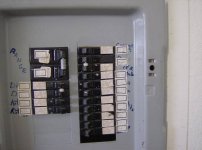madpenguin
Member
Thank you!
Really, it's an amazingly great thing that you're on here, giving advice like this. I can imagine it's not exactly fun answering questions all the time but then again, I do enjoy answering forum questions I have the knowledge to answer.
I now have a question about supplying power to everything.
You'd said not to hook the two lines that would be going to the in wall timer into any sort of power strip. I understand that too much current draw on a power strip can be dangerous. I'm totally ok with just plugging the mag ballast into a wall socket but that leads me to ask, what's the difference if the draw on the power strip is under 1440w? The power strip would have a circuit breaker and surge protection whereas otherwise there would only be a circuit breaker at the panel. If there's only one circuit in the room then it seems like it would kinda defeat the purpose of plugging the ballast into a wall plug, even if it's a different plug than everything else is on.
Heh. Well, so what do you suggest for supplying 8+ outlets in this cab? It'll have five separate compartments with one specifically for a fan and another for tool/nute storage. I'm figuring on using a power strip simply because it's far less expensive and possibly safer than using a 5 gang box and wiring in receptacles and 15a breaker myself. Not that I don't trust myself but I've never done that much 120v before.
Overall, I'm attempting to keep cabinet's amp draw around 10-12 so that I don't overload any circuit new or old.
Thanks again MP. You're invaluable around here.
The powerstrip is prone to failure because of the cheap contacts inside it. They like to melt if they see more than a few amps.
I would do the quad gang box with 20A receptacles any day over using a powerstrip. Theres no way a powerstrip will ever be safer than directly hardwiring receptacles in a gang box.




